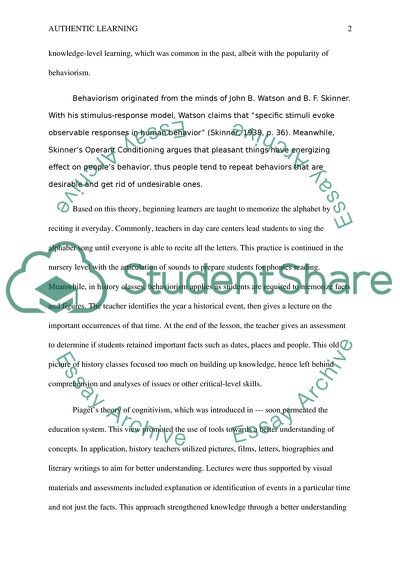Cite this document
(Teaching History through Authentic Learning Literature review Example | Topics and Well Written Essays - 2250 words - 1, n.d.)
Teaching History through Authentic Learning Literature review Example | Topics and Well Written Essays - 2250 words - 1. https://studentshare.org/education/1804344-authentic-tasks-in-history-class
Teaching History through Authentic Learning Literature review Example | Topics and Well Written Essays - 2250 words - 1. https://studentshare.org/education/1804344-authentic-tasks-in-history-class
(Teaching History through Authentic Learning Literature Review Example | Topics and Well Written Essays - 2250 Words - 1)
Teaching History through Authentic Learning Literature Review Example | Topics and Well Written Essays - 2250 Words - 1. https://studentshare.org/education/1804344-authentic-tasks-in-history-class.
Teaching History through Authentic Learning Literature Review Example | Topics and Well Written Essays - 2250 Words - 1. https://studentshare.org/education/1804344-authentic-tasks-in-history-class.
“Teaching History through Authentic Learning Literature Review Example | Topics and Well Written Essays - 2250 Words - 1”. https://studentshare.org/education/1804344-authentic-tasks-in-history-class.


